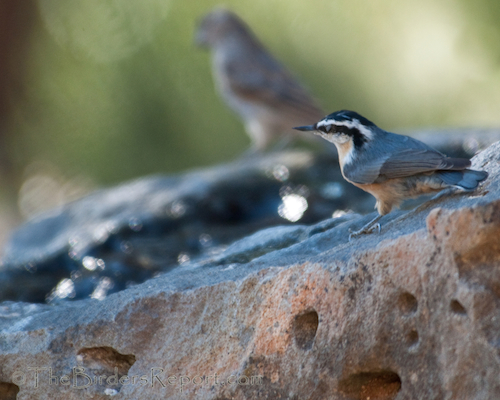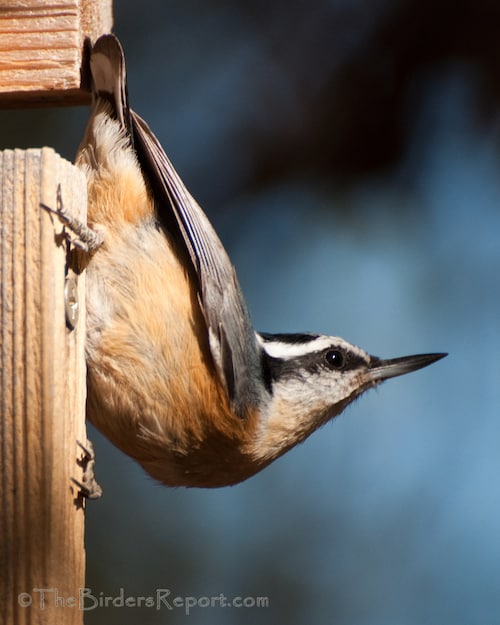The Red-breasted Nuthatches (Sitta canadensis) that came to my home about a month ago are still here! The male shown above (click on photos for full sized images) is distinguished from the female shown below by his black forehead, crown and nape.
The top of the female’s head is a more bluish-gray rather than black and her underparts are paler than the male’s.




If you recall, I mentioned in my Labor Day weekend post that this was a new bird added to my mythical yard list, but I assumed they were just passing through. Little did I know that the Red-breasted Nuthatch was unique among the North American nuthatches as the only species to undergo regular irruptive movements that appear to be primarily driven by a shortage of winter food on their breeding grounds.
During irruption years, large numbers of individuals often invade uncharacteristic habitats as far south as the Gulf Coast of Louisiana and the desert washes of northern Mexico. With its propensity for long-distance movements, the Red-breasted Nuthatch is the only North American nuthatch to have crossed the Atlantic to Europe as a vagrant1.

They are definitely spunky little nuthatches! They showed no fear of me and my camera as visited the feeders and the pond.
They feed mainly on arthropods during breeding season but conifer seeds the rest of the year which they also cache for a winter food supply.
They also breed in mix coniferous forest so my hope is that these visitors might make this a permanent home as the White-breasted Nuthatches have, although the Red-breasted Nuthatch rarely uses nest boxes.


For more great bird photos check out The Bird D’pot and Wild Bird Wednesday!
References: 1Birds of North America Online
Larry Jordan
Larry Jordan is an avid birder and amateur photographer living on the Pacific Flyway near the Central Valley of Northern California. He is a board member of his local Audubon Society and is a bird and wildlife conservationist. Larry contributes to several wildlife conservation organizations and is a BirdLife International "Species Champion." He is also Habitat Manager for the Burrowing Owl Conservation Network, an organization dedicated to the protection and restoration of the Western Burrowing Owl population in the United States. Larry has been blogging about birds since September of 2007 at TheBirdersReport.com

Leave a Reply